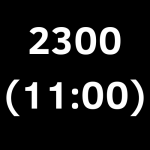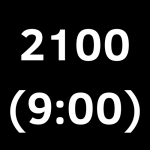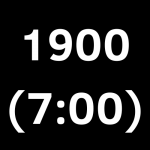Tracking time is an important element in our daily life. Scheduling an appointment, organizing a trip and making sure that healthcare is received on time is all about accuracy. The military time, or the 24-hour clock, is one of the methods that help with maintaining this precision. For this, the timekeeping system used by most people is very simple as it only requires one number to represent the time and day. Our topic today is about military time, which entails how to convert 1300 to regular hours, as well as practical uses and tips for interpreting and working with it.
Understanding Military Time
Military time is based on the 24 hour model that starts with midnight (0000 hours) and ends at 2359 hours. Military time does not consider AM and PM; hence, it expresses the time in a straightforward manner. For example, 1: In a standard, 00 AM is 1300 hours and 1:00 PM is 0100 hours.
Converting 1300 to Standard Time
It is simple to get standard time for 1300. We deduct 1200 from the military time in case it exceeds 1200. So, 1300 – 1200 equals 1: 00 PM in standard time. The simple formula helps easily translate between army/military time and regular time on different occasions as required.
Practical Applications
Military time is not just restricted to a military context. Military time makes sure that the precise medical prescriptions are documented, avoiding any ambiguities in health care provision. The use of military time is applicable in transportations and in aviator situations that require schedules and coordinations. Another important point that should never be overlooked is the fact, that it can easily be used during emergencies for quick communication of critical information.
Tips for Understanding Military Time
Since this is a new experience for most people who are used to civil time, it is important to get acquainted with them. Rapid conversion between military time and standard time is possible using reference charts and practice. Knowing that in military time there are no such things like AM or PM, and everything is calculated with an eye on straight 24 clock hours can greatly simplify the adoption of such approach for an inexperienced person.
To put it in short words military time represented by changing 1300 from civilian time is a clear and distinct manner of showing time. The system is very practical and precise hence used as a very functional platform that provides clear and understandable time representation among different professions.
The Importance of Military Time
The use of military time is not just a preference but a necessity in many scenarios where precision and accuracy are non-negotiable. In military operations, the difference of even a minute can have significant implications, determining the success or failure of a mission. Similarly, in the aviation industry, precise timekeeping is essential for the safe and efficient scheduling of flights. Ensuring that takeoffs, landings, and air traffic control communications are synchronized to the exact minute can prevent potential collisions and delays. Furthermore, in global operations that span multiple time zones, military time provides a uniform standard, reducing the risk of misinterpretation and errors that could arise from the use of the 12-hour clock.
Converting 1300 Military Time to Standard Time
Converting military time to standard time is a simple process that requires a basic understanding of the 24-hour clock. For times after 1200, the process involves subtracting 1200 to determine the PM equivalent in standard time. Therefore, 1300 military time, when converted, becomes 1:00 PM in standard time. This conversion is crucial in contexts where both military and standard time formats are used interchangeably, ensuring that all parties involved in communication can accurately interpret the intended time.
Advantages of Using Military Time
The primary advantage of military time lies in its ability to provide a clear and unambiguous representation of time, eliminating the confusion that can arise from the AM and PM designations used in the 12-hour clock. This is particularly beneficial in high-stakes professions where time is of the essence. For instance, in healthcare settings, medical staff need to accurately record patient care times to ensure proper treatment and medication schedules. The use of military time in documenting patient records and coordinating care reduces the chances of errors that could potentially lead to adverse health outcomes.
Military Time Chart: A Visual Aid
A military time chart serves as an invaluable tool for those who are not accustomed to the 24-hour clock format. It provides a visual aid that helps individuals quickly and accurately convert military time to standard time and vice versa. The chart typically lists the hours from 0000 to 2400 alongside their standard time equivalents, offering a convenient reference for quick conversions. This can be especially useful in educational settings, where students and professionals are learning to navigate between different time formats.
Practical Applications of Military Time
Beyond its professional uses, military time has practical applications in everyday life. It is commonly used in public transportation schedules, where clarity and precision are essential for commuters. Additionally, in the realm of international travel, military time provides a clear and universal standard for timekeeping, reducing the chances of misunderstandings that could arise from the different time formats used around the world. Embracing military time in daily activities can help individuals develop a habit of precise timekeeping, which can be beneficial in both personal and professional contexts.
Conclusion
In conclusion, 1300 military time (1:00 PM standard time) is an integral part of the 24-hour clock system used in various sectors for clear and precise timekeeping. Understanding military time and its conversion is essential for accurate communication and scheduling in fields that rely on this format.










